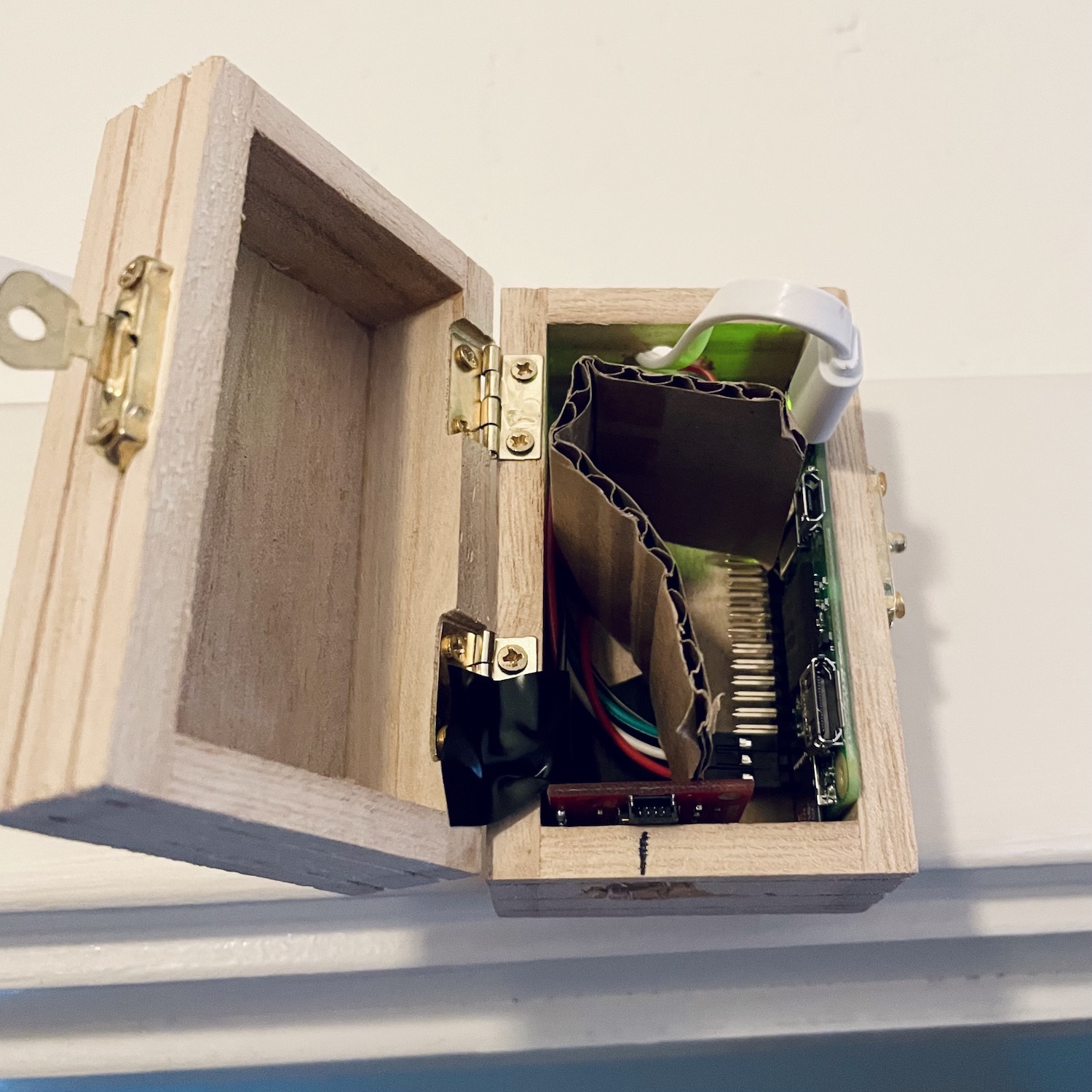SwiftOccupancy
09 Jan 2022 ∞
A project that I've been working on for quite some time is figuring out a good way to do room occupancy using thermopile sensors. I tried lots of different combinations of hardware and software: Wemos D1 boards, MQTT, web sockets, Swift, Raspberry Pis, etc. After each attempt I'd be disappointed with the results and shelve it for a while.
Over the last couple of weeks, however, I feel like I've finally cobbled together a system that's been accurate enough to deploy to a couple rooms in my house. The current solution uses Raspberry Pis, Swift, and MQTT to tie everything together.
The Hardware

The hardware is the most straight-forward. It uses an AMG8833 sensor and a Raspberry Pi. Placing the thermopile sensor above a door frame lets it watch people walk through the door. The plan is to eventually make some PCBs to clean up the installation.
The Software
This is, of course, the hard part. Watching a video it's really easy to tell when someone walks under the sensor. Convincing a computer to do that, less so. Luckily there's a lot of prior art I was able to leverage for examples.
The principles are pretty easy:
- The sensor is polled 10 times a second for new data
- A cluster detection algorithm is run to find a person in frame
- The
OccupacyCounteris given that data and determines whether someone is walking from top to bottom or visa-versa - The counts are updated and published via MQTT
- Other sensors watch MQTT and update their counts for each room
All of this is encapsulated in SwiftOccupancy. It's meant to be run locally on each Raspberry Pi to build a little network of distributed sensors around your house.
Unlike most of the projects I work on, which are apps or basic local command line utilities, debugging was difficult. If for no other reason than I had to get up and walk back and forth through my office door over and over again. This did lead to probably the most comprehensive logging I've done. There's straight logging to a file, several ways to publish raw sensor data to MQTT, a heat-map, and a companion app to pull it all together.
One of the little features I'm proud of is the concept of the æther as a room. If you don't want to track occupancy in a room, for instance a door leading outside, you can leave that side empty and internally people will just disappear when they walk into it.
Other Thoughts
The biggest limitation right now is the availability of Raspberry Pi Zero 2s. I bought a bunch of sensors but can't deploy them all because I can only get one Pi at a time.
Another, smaller, issue is power. Any door you want to place a sensor on needs to be close to an outlet. using 15-foot USB cables helps, but doesn't solve everything. For instance I want to place a sensor at the bottom of my stairs, which would mean running a cable from the other side of the hall, up and around the ceiling, then back down.
The other issue that isn't as easily resolved is the cost. A Pi Zero 2 is $15, the AMG88 sensor is ~$25, plus all of the other bits and bobs, each assembled sensor ends up costing $80, probably closer to $100 after shipping and taxes. On the plus side each sensor does cover two rooms, but they add up quickly for a whole house.
All that being said, it's been a fun project and there's still more to work on. If you want to try it out everything's over on GitHub.